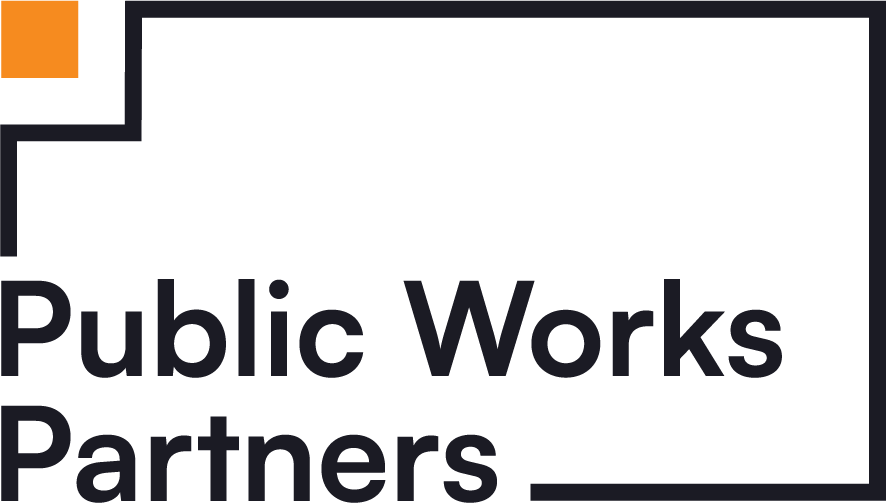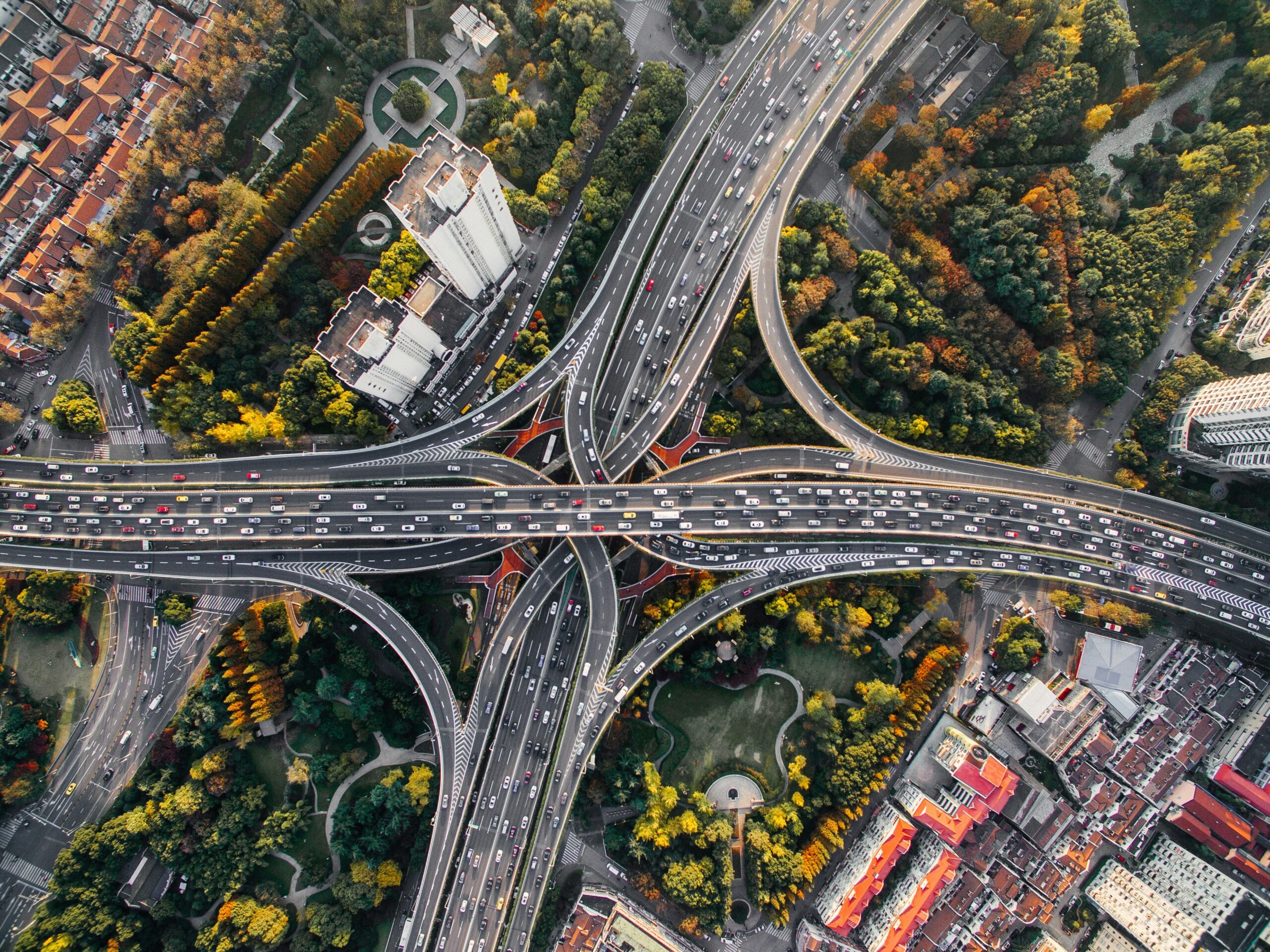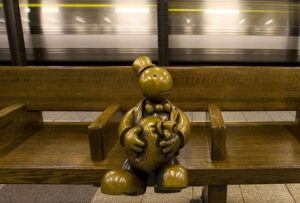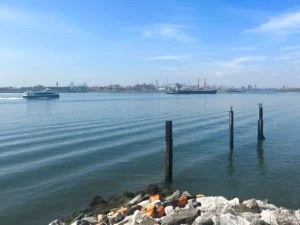Written by David Marvin & Maliya Malik
In the hustle and bustle of our daily lives, it’s easy to overlook the fundamental component keeping our cities moving – the roads and transportation networks. Think of them as the silent vessels that carry the heartbeat of urban life. Now, imagine a world where these roads not only facilitate movement but do so with an intelligence of their own – that’s the promise of Artificial Intelligence (AI) in transportation. AI enables pedestrian detection, increasing road safety by identifying and predicting driver pedestrian movements. AI can potentially improve traffic flow, aid in road condition monitoring, detect traffic incidents, and swiftly alert authorities to crashes or road obstructions. Moreover, AI improves road safety through driver monitoring systems, detecting signs of fatigue and promoting attentiveness during journeys. This versatile integration of AI across these applications fosters safer, more efficient transportation networks. For instance, traffic flow significantly impacts a country’s economy, road safety, and environmental well-being. Traffic causes increased fuel consumption and heightened commuter stress. To address this issue effectively, AI optimizes traffic flow through continuous analysis of real-time data from sources like traffic cameras, GPS devices, and road infrastructure sensors. Unlike traditional fixed-timing traffic signals, AI-driven dynamic traffic signal control adjusts real-time timings based on current traffic conditions, ensuring optimal signal timings for improved efficiency.
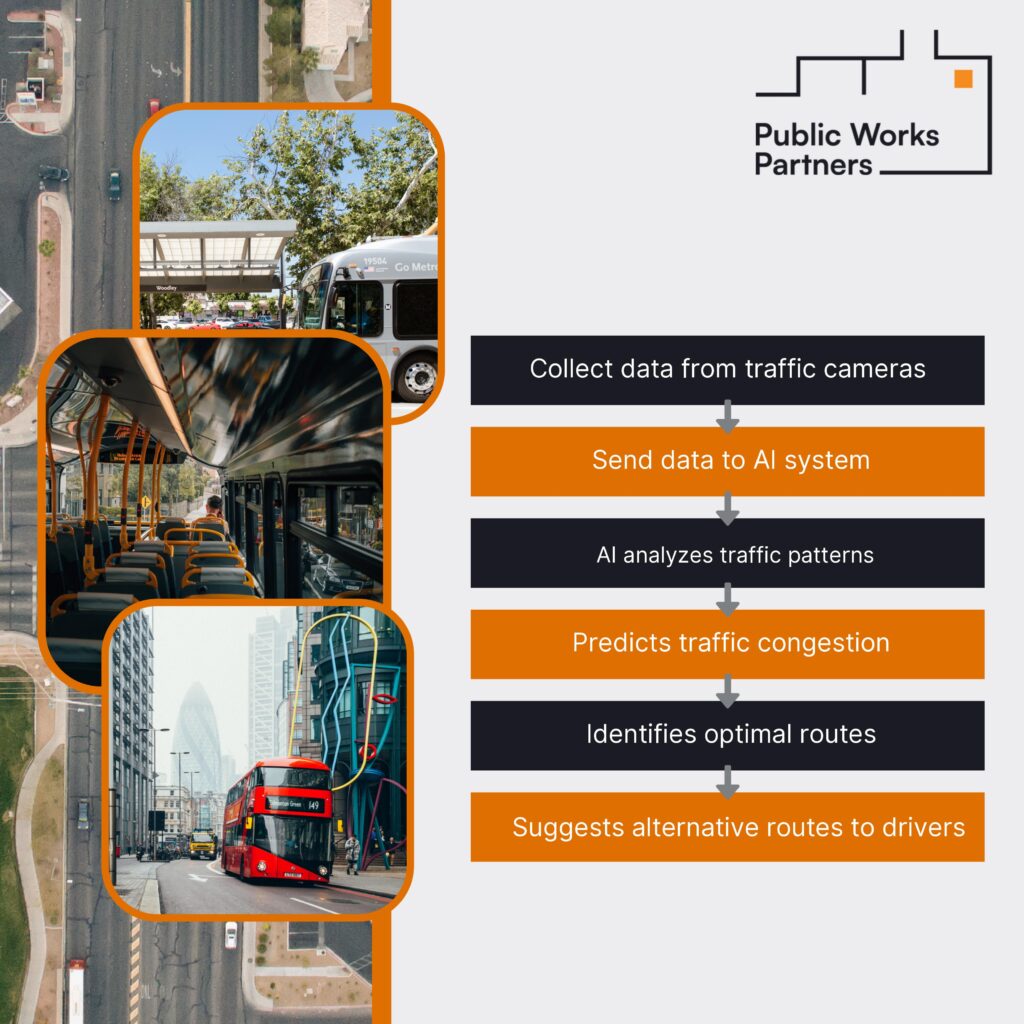
The Traffic Problem
The United States transportation system is overwhelmingly dependent on personal car ownership. In 2021, nearly 92% of American households owned at least one car. Despite the widespread ownership of personal cars, many Americans wished they had more transportation options. According to a 2020 Data for Progress poll, 80% of respondents who reported a vehicle as their primary transportation mode stated that they “have no choice besides driving”. When people do not have any other efficient options for transportation, it is natural that they will rely on personal cars, resulting in high traffic levels.
Few things elicit more complaints than the mundane annoyance of traffic congestion. Getting stuck in a seemingly endless traffic jam is a universal experience that has been memorialized in popular culture, from the iconic opening scene of Office Space to the more recent traffic jam musical number in La La Land. According to the mobility analytics firm Inrix, “the typical U.S. driver lost 51 hours to congestion in 2022, about an hour each week”. These effects of traffic are magnified in major cities with higher population density. In 2022, Chicago drivers spent a whopping 155 hours in commuting traffic. Traffic and car usage’s detrimental effects on the environment and individual’s long term-health are well-documented. Still, a new study suggests that automobile pollution prompts nearly instant changes in physiology, ranging from increased blood pressure to triggering heart attacks and strokes.
Transportation planners and engineers have grappled with the traffic problem for decades to little avail. As AI exploded onto the scene in the past decades, forward-thinking planners began imagining the cities of the future, where AI is incorporated into many of the systems that keep our cities running.
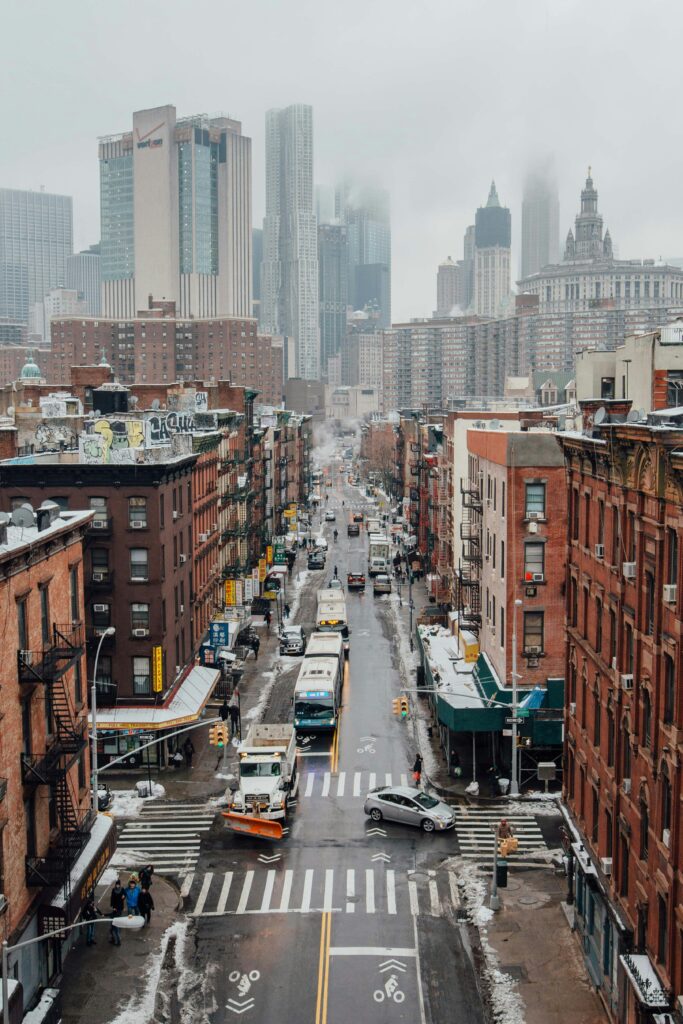
AI-Powered Traffic Optimization Projects
Companies like ClearWay and HikVision are pioneering computer vision AI tools that monitor live CCTV feeds of roadways and are able to quickly detect crashes, erratic drivers, and debris and then alert the relevant authorities, cutting down on response time. The RoadEye project proposes smart cameras that classify roadway conditions ranging from icy roads to potholes and warn drivers as they approach dangerous conditions. Australia-based Future Fleet sells a Driver Fatigue Monitoring Camera, which records a driver’s facial expressions and eyes to monitor for distracted driving and symptoms of fatigued driving, including yawning and frequent elongated blinking. When the system detects fatigued or distracted driving, an AI Driving Coach broadcasts audio and visual alerts that inform the driver of their impaired driving. Future Fleet and RoadEye are both examples of Advanced Driver Assistance Systems (ADAS), next-generation technology systems that aim to reduce car crashes and make roads safer for drivers, pedestrians, and cyclists alike.
Intelligent Traffic Systems (ITS) are one of the most promising applications of AI in the transportation industry. AI can analyze vast amounts of data, compare historical trends to current conditions, and create real-time insights. These insights can aid human traffic managers in making decisions that result in decreased congestion, such as adjusting traffic signal timing at an intersection prone to bottlenecks. As more and more data is collected, ITS can help establish new traffic light timing guidelines that ease traffic flow and reduce emissions from idling vehicles. The Swedish company Viscando is one of the global leaders in AI ITS solutions. Its OTUS3D product uses 3D AI sensors to simultaneously count pedestrians, cyclists, and motor vehicles and track their behaviors and interactions. OTUS3D then provides clear visuals of how multimodal roadway passengers use the study area, from their movement pattern and velocity to the density of the particular group. With this information, traffic planners are able to adjust traffic signal timing and roadway design accordingly.
In 2020, the US Department of Transportation’s AI for Intelligent Transportation Systems Program released a report that outlined 40+ potential AI applications across a variety of infrastructure, notably in traffic signal optimization and extensive traffic modeling—areas closely aligned with Viscando’s initiatives With the help of AI, planners will be able to reduce traffic signal retiming intervals from 3-5 years to as low as once per month, which will allow planners to respond to changes in traffic patterns quickly. Crucially, AI applications are able to learn over time and iterate, depending on how the new signal timing schemes affect traffic levels. Current traffic models are typically constrained to small areas, but AI can facilitate large scale and flexible traffic models. By zooming out, these models will help traffic planners understand and predict traffic patterns, operations, and safety in much larger regions than ever possible. While USDOT is optimistic about the future of AI for ITS, one of the key takeaways of their 2022 paper on the challenges of AI for ITS was “maintaining a human-in-the-loop helps identify and mitigate these challenges.” While AI will undoubtedly increase efficiency and allow for complex traffic optimization projects, it is clear that humans will have to oversee AI applications and make nuanced decisions that AI is not yet capable of making.
How Are Cities Utilizing AI for Transportation?
Cities worldwide are turning to Artificial Intelligence for innovative transportation solutions. While some cities have embraced AI to enhance traffic flow, improve public transit, and revolutionize mobility, others, like New York City, still face challenges in fully integrating AI into their transportation systems. This section explores how cities around the globe, including Dubai, Chino City, and Helsinki, are leveraging AI to address various transportation needs. NYC has yet to fully harness the potential of AI applications in the transportation sector. By looking at the success stories of other global cities, NYC can pave the way for more efficient, sustainable, and technologically advanced urban transportation systems, benefitting both residents and visitors alike.
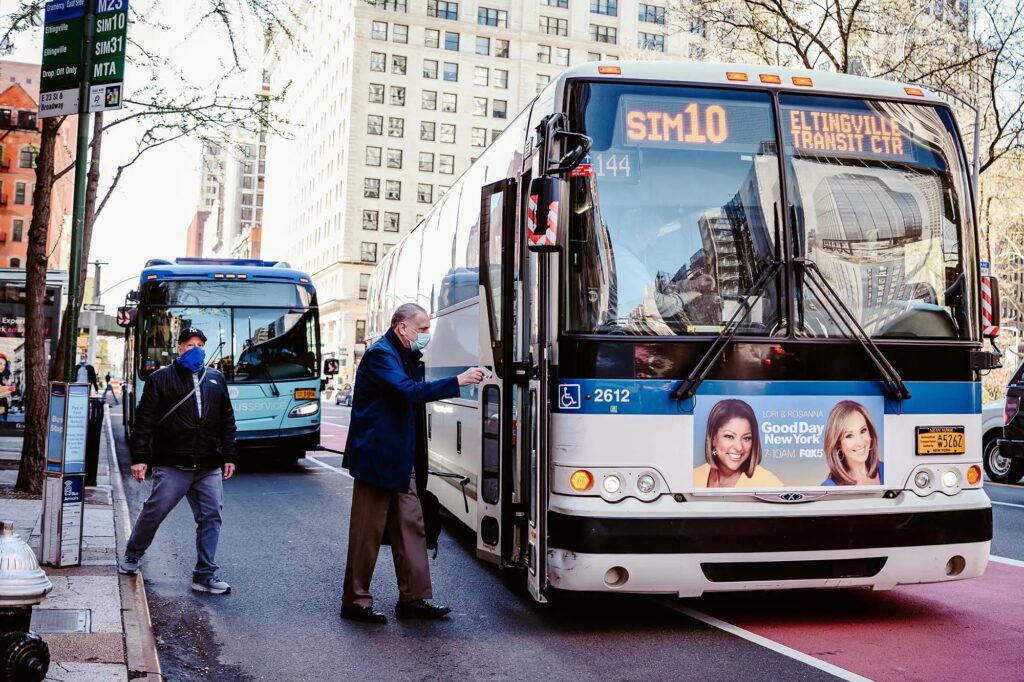
NYC: The Metropolitan Transportation Authority (MTA) intends to use AI technology from Preteckt to stop buses from breaking down. This predictive maintenance technology, tested for two years, acts as an advanced version of the check engine light in your car. It can identify potential problems early, allowing maintenance crews to fix issues before they become severe and expensive. The system analyzes data from bus sensors, considering factors like temperature and speed. If a problem is detected, the bus is sent to a depot for a specific repair plan. The MTA plans to invest in this technology to save on labor and parts costs while ensuring that their fleets are able to provide consistent service to commuters.
Dubai: Dubai is a city that has increasingly adopted AI across different sectors, with a notable focus on road maintenance. For example, Dubai Silicon Oasis (DSO), a specialized economic zone focused on knowledge and innovation, collaborated with Derq, a prominent developer of AI-driven traffic technology, to introduce 14 AI Smart Pedestrian Crossing Systems within Dubai Silicon Oasis. The Dubai Roads and Transport Authority has also employed patrol vehicles equipped with AI technology to systematically inspect the city’s roads for any signs of deterioration, detecting cracks as small as 1mm. This cutting-edge system utilizes advanced sensors and algorithms, employing high-resolution cameras and laser scanning capabilities to instantly identify and analyze road defects by scanning the road surface.
Chino City: Via, a global leader in TransitTech, has formed a partnership with Chino City, Japan, to launch “Noraza,” an AI-enabled, on-demand shared ride service. The initiative aims to accomplish five key public transportation objectives: broaden mobility access for local students and the elderly, foster a vibrant city environment conducive to growth and opportunity, facilitate convenient mobility for visitors, diminish reliance on taxi services amid driver shortages, and address traffic congestion by implementing more sustainable transit options. Noraza has been officially deployed as a permanent transportation solution in the region following a successful six-month pilot program. Noraza allows passengers to book rides through the Nozara app or call a designated customer booking telephone number. Upon entering their pickup and drop-off locations via the Noraza app and selecting an on-demand ride option, Via guides them to a nearby “virtual bus stop,” a short walk away. Physical bus stops are also available at popular locations such as Chino Station, Suwa Central Hospital, and commercial facilities. Utilizing AI-based algorithms, Via matches multiple riders with similar destinations into a single vehicle, creating efficient routes that reduce traffic congestion and emissions. This approach aims to provide passengers with a convenient transportation experience
Helsinki: While ADAS and traffic management systems are helpful in reducing traffic, the only guaranteed way to minimize traffic is to reduce the amount of vehicles on the roads. Helsinki, a world leader in innovative transportation initiatives, aims to reduce traffic emissions by 69% from 2005 to 2035, aiming to achieve carbon neutrality by 2035. Helsinki has implemented various solutions, from piloting autonomous buses for public transportation, to AI algorithms that have improved traffic flows from 15-30%. The Finnish capital is also the testing ground for Whim, one of the foremost Mobility as a Service applications (MaaS). Put simply, MaaS apps consolidate multi-modal transportation planning and payment into one convenient place. In the context of NYC, imagine you could plan and pay for a trip involving a subway, bus, ferry, Citi Bike, and yellow cab with a few swipes on your phone. Whim’s stated goal is to “create a world where you don’t have to own a car to live a fulfilling life” and the app has already moved the needle away from personal car usage since its release in 2017. 63% of Whim users take public transit at a higher rate than those who do not use the app, and 38% of Whim users have replaced car journeys with alternative modes of transportation on a daily basis. While non-Whim users in Helsinki employ public transit for 48% of their trips, Whim subscribers take public transit for 73%. Thanks to promising early data from Helsinki, Whim began operating in Tokyo, Vienna, parts of the United Kingdom, and Switzerland, signaling the growing global importance of MaaS and other technologies that lessen the need for personal vehicles.
Future of AI in Transportation
Future AI advancements may lead to more integrated urban planning for naturally traffic-friendly cities. Another emerging trend is Urban Air Mobility (UAM), which anticipates autonomous electric aircraft in urban transportation. AI ensures their safe operation, fostering sustainable and congestion-free urban travel. Advancements in 3D printing may revolutionize infrastructure construction, allowing quicker, cost-effective development. AI optimization of designs and materials ensures efficiency. There is also a possibility that Interconnected transportation systems may rely on vehicle-to-vehicle (V2V) and vehicle-to-infrastructure (V2I) communication, improving real-time safety and efficiency. As technology progresses, biometrics could enhance identification and personalization in transportation, offering a more secure and tailored travel experience across various modes. Finally, PRT (Personal Rapid Transit) is an inventive public transportation concept utilizing small automated vehicles on dedicated guideways. It can provide on-demand, non-stop travel, presenting a flexible and convenient alternative to traditional transit, and holds transformative potential in urban mobility through AI integration and advanced technologies.
Integrating AI into transportation systems represents a paradigm shift in addressing the perennial challenges of traffic and road safety. By harnessing AI-driven solutions, such as dynamic traffic signal control and ADAS, cities can optimize traffic flow, improve road safety, and mitigate environmental impacts. As evidenced by initiatives in cities like Helsinki, Dubai, and Chino, reducing reliance on personal vehicles is a key step in alleviating the burden of congestion and achieving sustainable urban mobility. New York City’s efforts in incorporating AI for predictive maintenance of its MTA bus fleet underscore the potential for innovative AI applications to improve transit operations and help reduce congestion. Additionally, approving the NYC congestion pricing scheme is a lower-tech option for reducing traffic by discouraging vehicle trips into mid and lower Manhattan during peak hours. Embracing AI-powered solutions for transportation planning and prioritizing investments in public transit and alternative mobility solutions can pave the way for transformative changes, leading to more efficient, equitable, and sustainable transportation systems for future generations.
